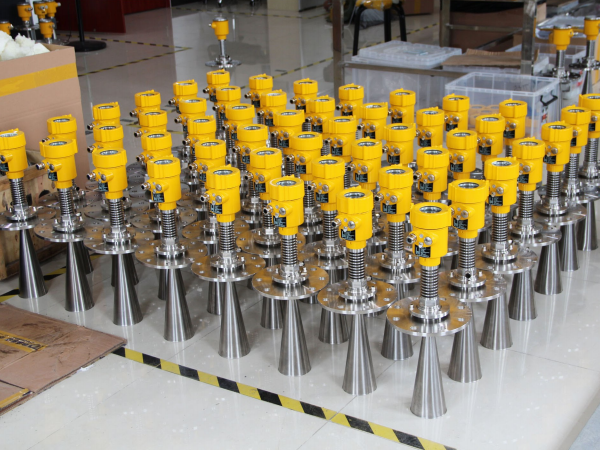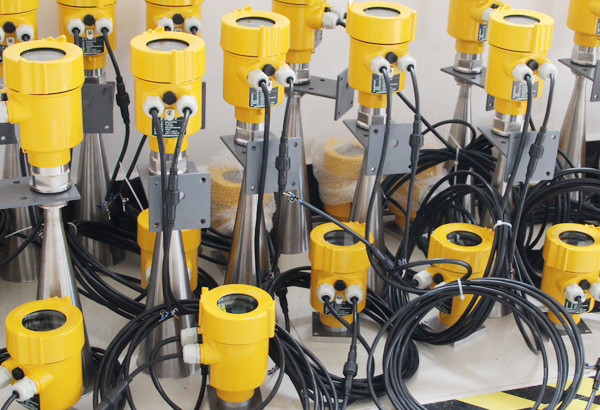Radar level gauge and tuning fork level gauge are two common liquid level measurement technologies, each with unique advantages and limitations.
This article will provide an in-depth analysis of the working principles, performance characteristics and applicable scenarios of these two devices, with a view to providing a clear comparative analysis for related industries.

Radar level gauges, as their name suggests, use microwave signals from radar waves to measure liquid levels. It emits microwave pulses and receives the echoes, determining the liquid level position by calculating the time difference between sending and receiving.
The beauty of this technology is that it can penetrate many media, including plastic, glass and metal, and is not affected by temperature, pressure, humidity or changes in the medium within the container. Therefore, radar level gauges are widely used in fields such as chemical processing, petroleum refining, and food processing.
In contrast, a tuning fork level gauge is a device that works on the principle of mechanical vibration. Its core component is a tuning fork with a very stable vibration frequency.
When the liquid immerses the tuning fork, the vibration frequency of the tuning fork will change. By detecting this frequency change, the level of the liquid level can be known.
Tuning fork level gauges are favored for their excellent corrosion resistance and high reliability, especially in the water treatment and pharmaceutical industries that require high-precision measurements.

From the perspective of measurement accuracy, radar level gauges can usually provide millimeter-level measurement accuracy, which is very suitable for occasions that require extremely high accuracy. Although the tuning fork level gauge is slightly less accurate, it is sufficient to meet the needs of most industrial applications.
In terms of environmental adaptability, radar level gauges perform better in high temperature, high pressure or corrosive environments because they do not directly contact the medium.
Although tuning fork level gauges can also be used in harsh environments, their mechanical properties may be affected under certain extreme conditions.
The convenience of installation and maintenance is also an important indicator of the quality of the liquid level gauge. Radar level gauges often require professional installation and may require additional commissioning where there are obstacles or the vessel has a complex shape.
The tuning fork level gauge has a relatively simple structure and is easy to install and maintain. The cost factor cannot be ignored either.
Usually, the price of radar level gauge is higher than that of tuning fork level gauge, which is related to its higher technical content and wider application range.
However, the stability and low maintenance nature of radar level gauges may result in greater operating cost savings in the long run.

Radar level gauges and tuning fork level gauges each have their own merits, and which device to choose should be based on specific measurement needs, environmental conditions, and budget considerations.
Regardless of the technology chosen, accurate level measurement is key to ensuring smooth running of industrial processes.
In the world of liquid level measurement, radar level gauges and tuning fork level gauges are the tools that help industrial development.
